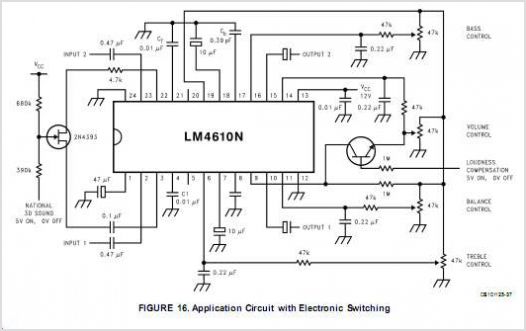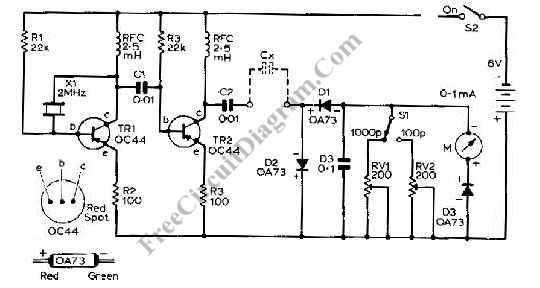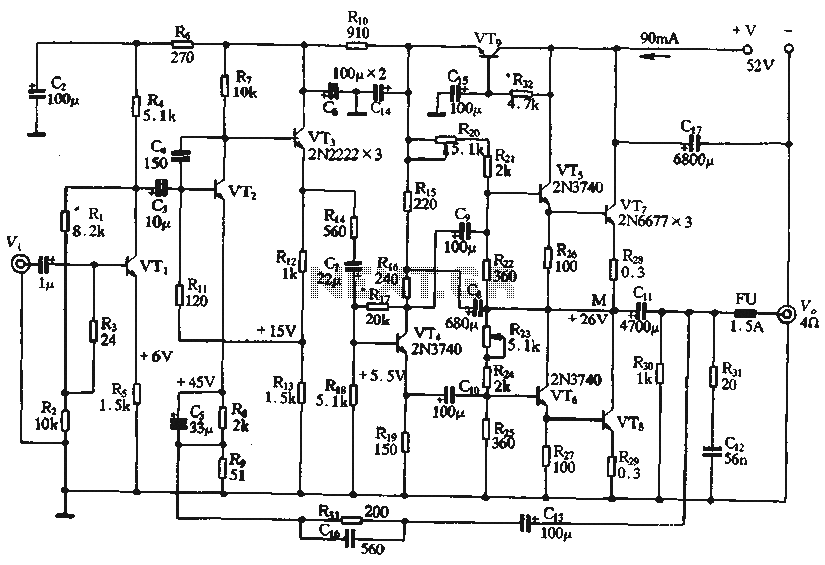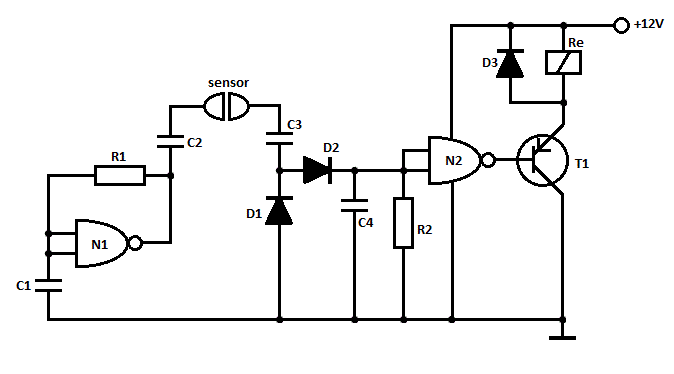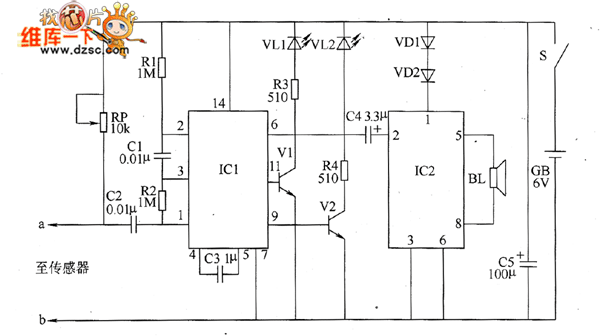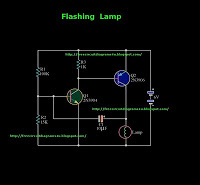
Quartz Crystal Oscillator Circuit
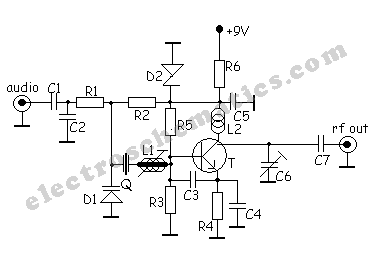
This quartz crystal oscillator circuit exhibits greater stability compared to a parallel resonance circuit. It is capable of generating frequencies up to 30 MHz or even higher when utilizing BFR91 transistors for T1 and T2, along with reduced values for resistors R1 and R2. The MOSFET buffer serves to insulate the oscillator from any connected circuit.
The quartz crystal oscillator circuit operates on the principle of resonance, utilizing a quartz crystal to maintain a precise frequency output. The stability of this circuit is significantly enhanced due to the inherent properties of the quartz crystal, which provides a stable frequency reference that is less susceptible to variations in temperature and load conditions.
In this design, the transistors T1 and T2, specifically the BFR91 model, are configured in a feedback loop to amplify the oscillation generated by the crystal. The resistors R1 and R2 are critical in setting the gain of the circuit; by reducing their values, the overall gain can be increased, allowing the circuit to achieve higher frequency outputs beyond the standard 30 MHz threshold.
The inclusion of a MOSFET buffer in the circuit design is crucial for isolating the oscillator from external influences. This buffer stage prevents loading effects from subsequent stages or connected circuits that could otherwise dampen the oscillation or introduce noise. The MOSFET, known for its high input impedance, ensures that the oscillator's performance remains unaffected by the variations in the connected load.
For optimal performance, careful selection of the crystal frequency, transistor parameters, and resistor values is essential. Additionally, the layout of the circuit should minimize parasitic capacitance and inductance, which can degrade signal integrity at higher frequencies. This oscillator circuit is suitable for applications requiring precise frequency generation, including communication systems, clock generation, and signal processing tasks.This quartz crystal oscillator circuit has greater stability than a parallel resonance circuit. It generates frequencies up to 30 MHz or even higher if you use BFR91 for T1, T2 transistors and reduce R1 R2 values. The MOSFET buffer insulate the oscillator from any connected circuit. 🔗 External reference
The quartz crystal oscillator circuit operates on the principle of resonance, utilizing a quartz crystal to maintain a precise frequency output. The stability of this circuit is significantly enhanced due to the inherent properties of the quartz crystal, which provides a stable frequency reference that is less susceptible to variations in temperature and load conditions.
In this design, the transistors T1 and T2, specifically the BFR91 model, are configured in a feedback loop to amplify the oscillation generated by the crystal. The resistors R1 and R2 are critical in setting the gain of the circuit; by reducing their values, the overall gain can be increased, allowing the circuit to achieve higher frequency outputs beyond the standard 30 MHz threshold.
The inclusion of a MOSFET buffer in the circuit design is crucial for isolating the oscillator from external influences. This buffer stage prevents loading effects from subsequent stages or connected circuits that could otherwise dampen the oscillation or introduce noise. The MOSFET, known for its high input impedance, ensures that the oscillator's performance remains unaffected by the variations in the connected load.
For optimal performance, careful selection of the crystal frequency, transistor parameters, and resistor values is essential. Additionally, the layout of the circuit should minimize parasitic capacitance and inductance, which can degrade signal integrity at higher frequencies. This oscillator circuit is suitable for applications requiring precise frequency generation, including communication systems, clock generation, and signal processing tasks.This quartz crystal oscillator circuit has greater stability than a parallel resonance circuit. It generates frequencies up to 30 MHz or even higher if you use BFR91 for T1, T2 transistors and reduce R1 R2 values. The MOSFET buffer insulate the oscillator from any connected circuit. 🔗 External reference
